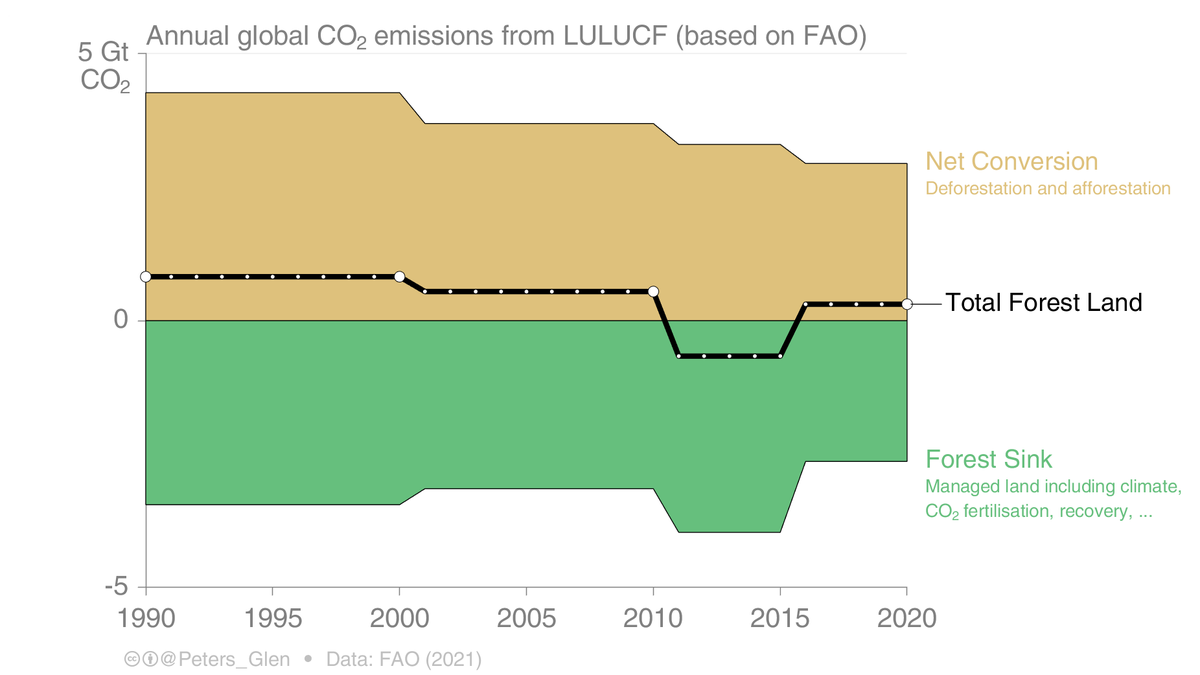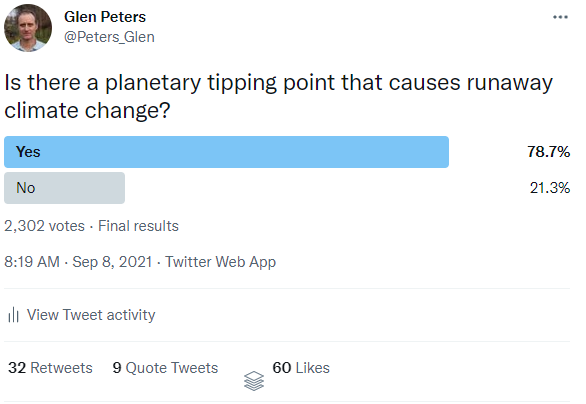
#ClimateTwitter Direct Air Capture (DAC)
In 2011, Rob Socolow estimated that 1MtCO₂/yr DAC would require a contact structure with height 10m & length of 5km.
Is that still the case?
1/
aps.org/policy/reports…
In 2011, Rob Socolow estimated that 1MtCO₂/yr DAC would require a contact structure with height 10m & length of 5km.
Is that still the case?
1/
aps.org/policy/reports…

If I look at these pictures of Climeworks Orca via @EdgarHertwich
The height is ~3m, the length ~10m, & 4 units
Area: 120m² for 4000tCO₂/yr
Or: 30,000m² for 1MtCO₂/yr (120/4*1000)
If 10m high (Socolow), then contact structure ~3km long.
2/

The height is ~3m, the length ~10m, & 4 units
Area: 120m² for 4000tCO₂/yr
Or: 30,000m² for 1MtCO₂/yr (120/4*1000)
If 10m high (Socolow), then contact structure ~3km long.
https://twitter.com/EdgarHertwich/status/1437308011916189698
2/


This is rather crude, but is quite similar to the original Socolow estimate. If true, this is fascinating…
If contact structure is 10m high, then 1MtCO₂/yr requires 3-5km structure
1GtCO₂/yr requires 3-5000km
5GtCO₂/yr requires 15-25,000km
3/
If contact structure is 10m high, then 1MtCO₂/yr requires 3-5km structure
1GtCO₂/yr requires 3-5000km
5GtCO₂/yr requires 15-25,000km
3/
If there is 250m space on each side, 500m total, then
1MtCO₂/yr requires 1.5-2.5km²
1GtCO₂/yr requires 1,500-2,500km²
5GtCO₂/yr requires 7,500-12,500km²
4/
1MtCO₂/yr requires 1.5-2.5km²
1GtCO₂/yr requires 1,500-2,500km²
5GtCO₂/yr requires 7,500-12,500km²
4/
Are my calculations approximately correct?
In terms of area, far less than several India's required for BECCS or afforestation (several million km²), but still DAC is often sold as having a small footprint.
I can see the NIMBYs already with these vast structures...
5/5
In terms of area, far less than several India's required for BECCS or afforestation (several million km²), but still DAC is often sold as having a small footprint.
I can see the NIMBYs already with these vast structures...
5/5
• • •
Missing some Tweet in this thread? You can try to
force a refresh









